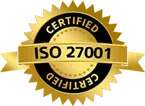Small Object Detection and Counting Using AI
Published March 24, 2024
In the evolving landscape of artificial intelligence (AI), one of the most challenging and impactful areas is the detection and counting of small objects within images or video streams. This capability is crucial across a wide range of applications, from quality control in manufacturing to monitoring biodiversity in environmental studies. Small object detection and counting using AI involves identifying and enumerating objects that occupy a minimal area within an image, often amidst complex backgrounds and variable conditions.
The Challenge of Small Object Detection
Small object detection is inherently challenging due to the limited number of pixels representing each object, which can lead to difficulties in distinguishing between the object and the background or noise. Additionally, small objects in a dense arrangement can easily overlap or occlude each other, complicating the detection and counting process.
Key Challenges Include:
- Low Resolution: Small objects often lack detailed features, making them hard to identify.
- High Density: In crowded scenes, small objects can be closely packed, leading to occlusions and miscounts.
- Variable Conditions: Changes in lighting, perspective, and environmental conditions can significantly affect detection accuracy.
Advances in AI for Small Object Detection
Advancements in AI, particularly in deep learning, have significantly improved the ability to detect and count small objects. Convolutional Neural Networks (CNNs) and advanced algorithms like YOLO (You Only Look Once) and SSD (Single Shot MultiBox Detector) have been tailored to address the unique challenges of small object detection. However, straightforward implementation of these AI models may not give you the expected accuracy. Depending on the use cases, you need to customize the AI models, algorithms etc. Discuss your use case with an expert.
Techniques and Technologies:
High-Resolution Imaging: high-resolution cameras and enhancing image quality through preprocessing to make small objects more distinguishable.
Specialized Neural Networks: Designing neural network architectures that focus on detecting smaller features and patterns.
Data Augmentation: Increasing the diversity of training data through techniques like zooming, cropping, and rotating images to improve the model's ability to recognize small objects under various conditions.
Applications of Small Object Detection and Counting

Quality Control in Manufacturing
In manufacturing, AI-driven systems can detect and count small components or defects on products, ensuring high-quality standards and minimizing waste. For example, in the electronics industry, AI can accurately identify and count tiny components like resistors and capacitors on circuit boards.
Environmental Monitoring
AI plays a crucial role in environmental conservation, where it helps in counting and monitoring small species, such as insects or juvenile fish, contributing to biodiversity studies and ecological management
Medical Imaging
In healthcare, AI-enhanced imaging techniques facilitate the detection and counting of small features in medical scans, like cells or microcalcifications in mammograms, aiding in early diagnosis and treatment plann
Retail and Inventory Management
In the retail sector, AI systems can track and count small products or parts, automating inventory management and enhancing the accuracy of stock records
Future Directions
As AI technology continues to evolve, the detection and counting of small objects will become more accurate and efficient. Future developments may include:
Integration with Robotics: Combining AI with robotics to automate the picking and handling of small items in industries like manufacturing and logistics.
Enhanced Learning Algorithms: Developing more sophisticated machine learning models that can learn from fewer examples and generalize better to unseen data.
Cross-Domain Applications: Expanding the use of small object detection and counting in new areas such as aerial surveillance, maritime navigation, and urban planning.
Small object detection and counting using AI is a field of great potential and significant impact. By overcoming the challenges associated with detecting and enumerating small items, AI is enabling improvements in efficiency, accuracy, and insight across various industries. As the technology advances, its applications will expand, offering new opportunities for innovation and transformation in the way we monitor, analyze, and interact with the physical world.

